
Subotica and Palic Travel Guide
TL;DR
Comprehensive travel guide including Subotica what to see and Palic what to see.
During our visit to Subotica and Palic, we fell in love with these two towns close to the Hungarian border. Don’t miss out on these two gems while travelling Serbia! Here’s our comprehensive Subotica and Palic travel guide:
Subotica Travel Guide
Where is Subotica Located?
Subotica is located in the very north of Serbia only a 15-minute drive from the Hungarian border.
What is Subotica Known for?
Subotica is best known for its stunning Art Nouveau architecture.
Is Subotica Worth Visiting?
Subotica is absolutely worth a visit. Due to its location close to the border, it’s also a great stopover destination on your way from Serbia to Hungary.
Where to Stay in Subotica
We stayed at Hostel Put Svile and can 100% recommend it. The location is right at the bus station which is amazing for backpackers. It’s impeccably clean and the owners are always there to help and give advice.
Is Subotica Safe?
Although Subotica is a border town (and border towns do not have the best reputation in general) we felt very safe.
Subotica has a small-town feel and I felt very safe – also walking around alone as a woman.
Subotica Where to Eat
- Bates is the number 1 recommendation for food in Subotica.
- Bates Expres is a cantine-style restaurant on the other side of the road. It is amazing if Bates is full or if you need a lower price point.
- Speaking of cheap, cantine-style restaurants: There is one at the bus station which is surprisingly decent.
- If you’re looking for Western-style food, Boss Caffe is your go-to address.
Best Things to Do in Subotica
1. Stroll Along Korzo
The main pedestrian street of Subotica is lined with beautiful buildings as well as plenty of shops and cafes.
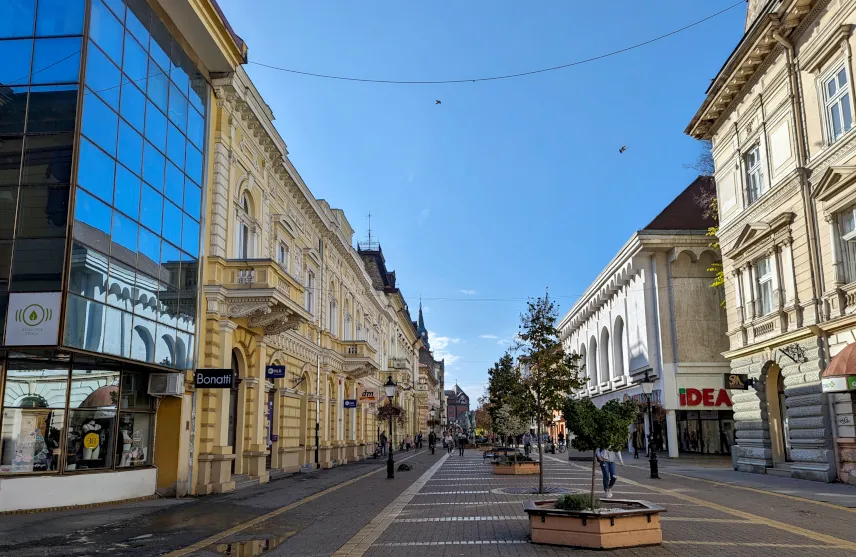
2. Subotica Savings Bank Palace
Designed in the Hungarian style, it was built in 1908 for the Subotica Savings Bank. Look out for the symbols: Squirrel for diligence, beehive for thrift, owl for wisdom.
3. Subotica City Hall
Constructed between 1908 and 1912, the City Hall seamlessly blends the decorative elements of Art Nouveau with a touch of Hungarian folklore romance including ceramic floral motifs and intricately forged wrought ironwork.
You can visit from Tuesday to Friday at noon.

4. National Theatre
The National Theatre was built in the classic style and is characterised by six Corinthian columns.
5. McDonald’s
Don’t miss the stunning Art Nouveau interior of the Subotica McDonald’s.
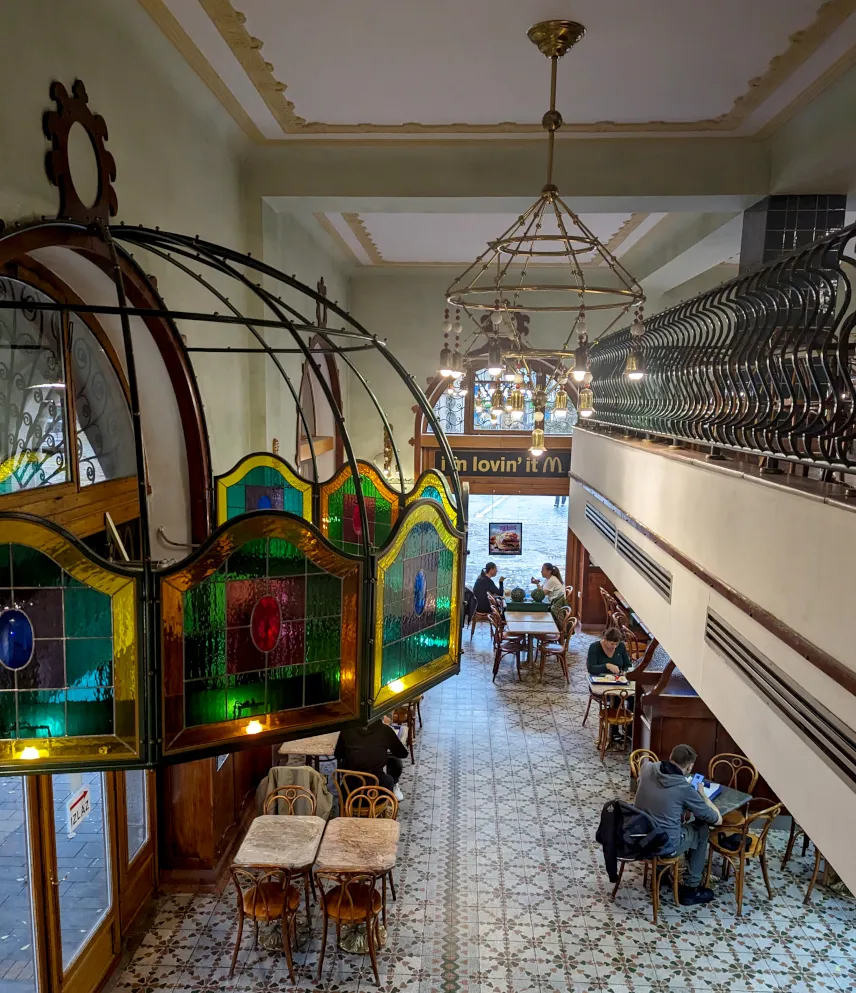
6. City Library
The most distinguishing feature of the neo-baroque building of the Public Library is the two Atlases carrying one of the nicest balconies in the city.
7. Subotica Synagogue
Constructed in 1902, Subotica Synagogue is one of Europe's finest examples of religious architecture in the Art Nouveau style. It is also Europe’s second-largest synagogue. Adorned with stylised tulips, carnations, and peacock feathers, it is a typical example of the Hungarian style.
You have to pay a small fee to enter but it’s absolutely worth it!
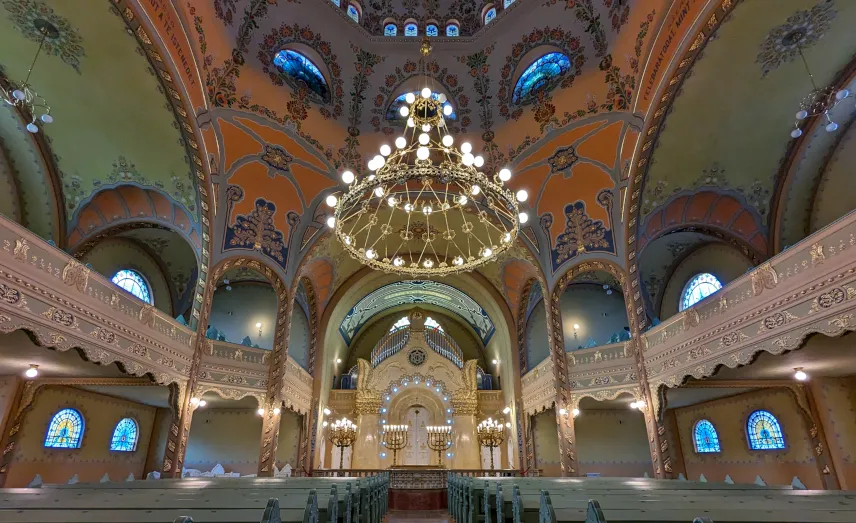
8. Chapel of St. Roch
A small Roman-Catholic chapel on Matka Vukovica and a nice pit stop on your way to the cathedral.
9. St. Theresa of Avila Cathedral
Constructed in the late Baroque style, the cathedral is dedicated to St. Theresa of Avila, the patron saint of Subotica.
10. Raichle Palace
This is probably the finest example of Art Nouveau architecture in Subotica. Nowadays, it houses the Modern Art Gallery “Likovni Susret”.

11. Orthodox Church of the Ascension of Our Lord
Constructed in 1726, the Baroque church stands on the highest point of the old city.
12. Subotica City Museum
The Art Nouveau building houses archaeological, ethnographic, historical, art and natural collections.
How to Get from Subotica to Palic
Buses from Subotica to Palic run super regularly. Bus line 6 leaves from the stops along Maksima Gorkog around every 20 minutes.
Some buses run to and from the main bus station as well. We took the direct bus at 9:00 a.m. which is a great choice if you stay at Hostel Put Svile.

Palic Travel Guide
Where is Palic Located?
Palic is located a 15-minute drive east of Subotica.
What is Palic Known for?
Palic is most known for Lake Palic.
Is Palic Worth Visiting?
Palic is absolutely worth a visit, especially if you like
- Lakes.
- Wine.
- Spa architecture.
Can You Swim in Palic Lake?
While there are several baths and beaches around Lake Palic, the water is not considered safe for swimming.
Palic Where to Eat
The best places to eat in Palic are
- Paprika Carda for local fish.
- Feher Akac for Hungarian cuisine.
Best Things to Do in Palic
1. Grand Terrace
At the time of its opening in 1912, the Grand Terrace was used as a multipurpose facility including a monumental ballroom. It was constructed in the style of Hungarian Art Nouveau which is especially visible on the two open terraces.
2. Owl's Tower
Bagojvar, translated as the Owl’s Tower, was constructed in 1892 as part of the sports complex established by Lajoš Vermeš, a distinguished athlete and the founder of the 1880 Palic Olympics.

3. Vila Lujza
Vila Lujza was constructed together with the Owl’s Tower in the Swiss style, characterised by the extensive use of wood and tiles made from the renowned Zsolnay ceramics.
4. Women’s Lido
The Women’s Lido is another example of the Art Nouveau style. The wooden building features an abundance of folk art details.
At the time of its construction in 1912, its primary purpose was to shield female swimmers from the prying eyes of curious men.
Today, the site has transformed into a cafe.
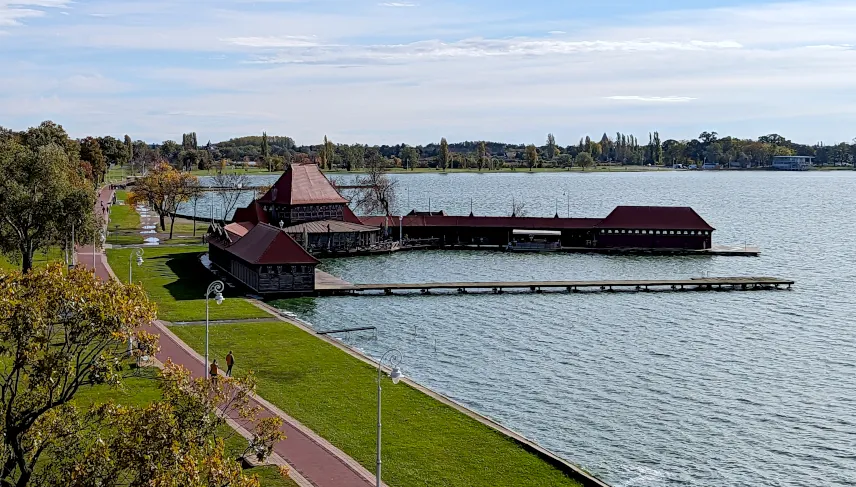
5. Men’s Lido
An open wooden construction which is the men’s equivalent to the Women’s Lido.
6. Palic Sign
A nice photo spot.

7. Paddle Steamer
Back in the day, you could go on steamboat cruises on Lake Palic. Nowadays it’s abandoned but still a nice photo spot.
8. Stroll Along the Lake
There are plenty of small sights along the Palic lakefront which should not be missed like
- Lajoš Vermeš Monument.
- Music Pavillion.
- Memorial Fountain.
- Blue Palic Vases.
9. Winery Vinarija Zvonko Bogdan
The building and the scenery of the winery are stunning. You can sample wine during the opening hours. If you want to take a tour, be smarter than us and pre-book!
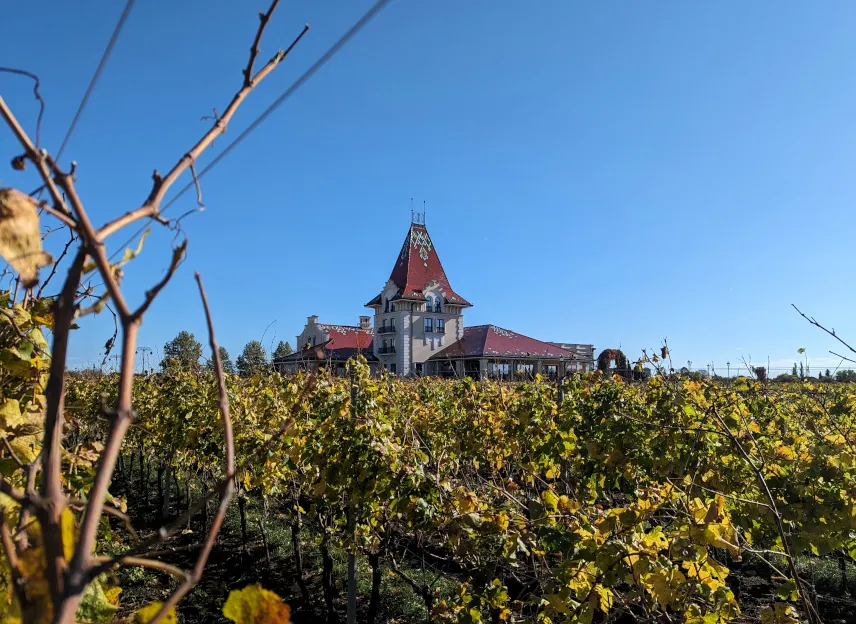
10. Water Tower
The Palic Water Tower, located next to the main road, is a symbol of Palic. Unfortunately, it was under construction when we visited.
11. Post Office
Located near the Water Tower along Szeged Road, one of Palic's finest villas was built by industrialist Rafael Hertman in the late 19th century. The summer house, adorned with a beautifully decorative wooden porch, showcases lace ornamentation in the Swiss architectural style.

12. Art Studio - Likovni Atelje Maria Karlović Gabrić
A small art studio you can visit for free along Splitska Aleja which is lined with many nice villas.
This post contains affiliate links. If you use these links to buy something we may earn a commission. You would help us a lot if you do so. Thanks.